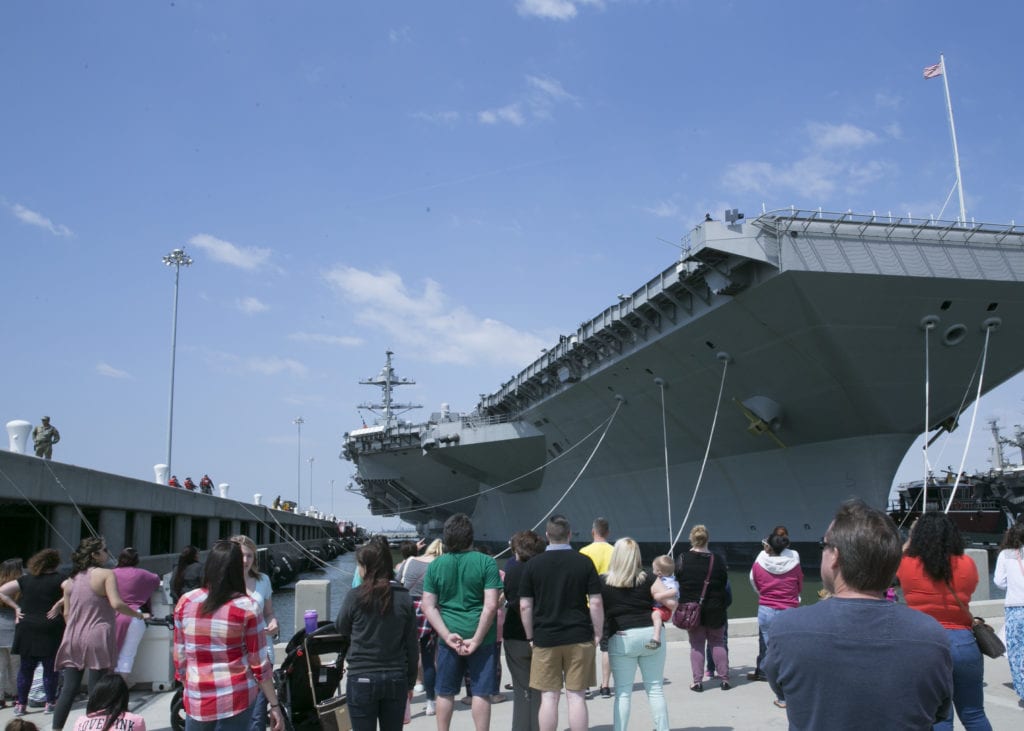
ARLINGTON, Va. — The U.S. Navy’s director of Air Warfare does not see a compelling case for the service to build and deploy light aircraft carriers to augment or replace the service’s large, nuclear-powered aircraft carriers (CVNs).
“I believe the L-class ships [amphibious assault ships] operating with the F-35B would fit that bill,” said Rear Adm. Gregory Harris, the Navy’s director for Air Warfare, speaking this week at a Navy League Special Topic Breakfast webinar, sponsored by General Dynamics. “Others would disagree.”
Harris noted that some pundits and other observers advocate light carriers because of the high cost of building, maintaining and operating the fleet of 11 CVNs, which some see as vulnerable to high-end threats such as submarines and hypersonic weapons. The capabilities of the F-35B Lightning II strike fighter have given the light carrier proponents support for their case that such a carrier armed with an air wing of F-35Bs would be highly valuable in most likely combat scenarios.
The Navy has in the past filled amphibious assault ship flight decks with Marine Corps AV-8B Harrier II jets for combat operations from the Persian Gulf, and recently conducted an experiment on the new USS America with a load of F-35Bs.
Defenders of CVNs note that the ship’s size enables it to carry a larger air wing, including E-2 battle management aircraft that are vital to the carrier’s over-the-horizon search and air defense capabilities. Often, they point to the 1982 Falklands War, where the U.K. Royal Navy suffered for lack of an ability to detect low-flying Argentinian attack aircraft soon enough to intercept them.
Harris said that the Navy is “committed to executing an analysis of alternatives to look at a light carrier or a follow-on carrier to the Ford class might look like.”
He referred to an earlier study that looked at 70 potential hull forms for aircraft carriers before settling on the Ford class.
“I would say that the majority of that study is still very valid,” he said. “Some of the mission sets may have changed slightly so we will look at those in light of the current threat out there in the world is valid and not unnecessary. It will be good for us to do that. I’m confident that over the long run we’ll find that there’s not a compelling return on investment to make a smaller carrier just [because of] speed, station-keeping, the air wing that you would put on top of that carrier, and the ability to have the fuel for the air wing and for the carrier to have for the surface combatants.
“So, we will execute that,” the admiral said. “We’re going to start a little bit of pre-AOA [analysis of alternatives] activities this summer and then we will look to kick that AOA off probably in the [2022] time frame to go ahead and formally revisit that.”
- Insitu Going Strong at 30, Focusing on Maritime Operations - April 8, 2024
- Navy Awards Boeing Additional Funds for MQ-25 Drones for Testing - April 3, 2024
- Benign 4th Fleet AOR Useful for Unmanned Vehicle Operationalization, Admiral Says - March 27, 2024






